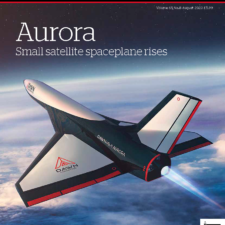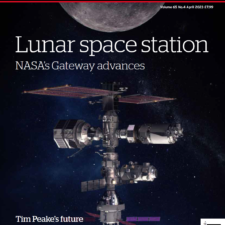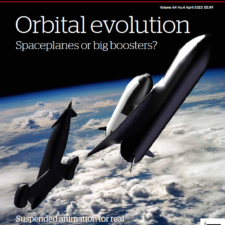The New Life of ESA’s INTEGRAL Spacecraft Without Propulsion System
£5.00
Godard, L. Toma, G. Demarco, S. Depadova, M. Baab, J. Martin, J. Huebner, R. Southworth, D. Salt, A. Macdonald, M. Tuttlebee, R. Kresken, C. Sanchez, E. Salazar, G. Belanger, M. Ehle, E. Kuulkers, S. Kowaltschek, N. Deslaef, M. deROSA, P. Chapman, T. Strandberg, M. Montagna (2022), JBIS, 75, pp.106-116
Refcode: 2022.75.106
DOI: n/a
Abstract:
The INTErnational Gamma-Ray Astrophysics Laboratory (INTEGRAL), developed and operated by ESA, uses reaction wheels for attitude control and to absorb the external torques that mostly result from the impingement of solar photons. The method to offload the excess angular momentum stored within them is very classical and consists of thruster firings. On 16 May 2020, INTEGRAL entered the emergency safe mode during a reaction wheel offloading. Severe underperformance of the thrusters and massive drops of pressure in the propellant lines were observed. These were the first indications that the whole reaction control system was affected and its usage should be restricted. A new way of controlling the spacecraft angular momentum using solar radiation pressure was developed. Although the propellant left in the pipes was thought to be enough to support another safe mode, a spurious reaction wheel switch-off on 22 September 2021 induced a tumble of several rotations per hour on the spacecraft, shadowing the solar panels. The batteries were depleting and the radio frequency link was toggling. Eventually, the attitude control was regained despite the impossibility of generating any impulse through the thrusters. More than one year after the loss of the propulsion system, INTEGRAL is however still flying and keeps collecting unique data in the high energy range of the electromagnetic spectrum. The paper presents first the findings from the anomaly investigation that led to considering the propulsion unreliable. It then explains the various modifications implemented to sustain angular momentum management and provide an adequate reaction in case of further attitude anomalies. Finally, it offers an outlook toward the remaining lifetime and the satellite end-of-life management options.
Keywords: INTEGRAL, Propulsion, Attitude control, Safe mode, Reaction wheels





